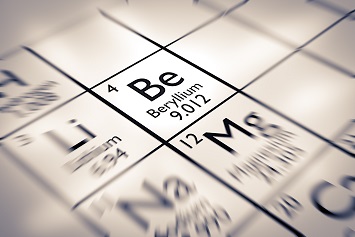On March 11, OSHA will begin enforcing additional provisions of its general industry beryllium standard. The agency will begin enforcing requirements for change rooms and showers.
OSHA will begin enforcing general industry requirements for engineering controls to limit worker beryllium dust exposures a year later, on March 10, 2020. At construction and shipyard workplaces, the agency is only enforcing the permissible exposure limit (PEL), which is 0.2 micrograms per cubic meter (µg/m3) of air averaged over 8 hours.
Standards in Flux
The beryllium standards for general industry and construction and shipyards are in flux. The standards have gone through several changes over the past two years:
- In the waning days of the Obama administration, OSHA published final rules for general industry, as well as construction sites and shipyards.
- Following his inauguration, President Donald Trump ordered executive departments to freeze the effective dates of regulations that had not yet taken effect for at least 60 days.
- OSHA further delayed the effective date from March 21 to May 20, 2017.
- OSHA proposed in June 2017 to rescind the ancillary provisions of the rule for construction and shipyards, retaining only the new PEL and short-term exposure limit (STEL).
- The agency then instructed regional administrators to delay enforcement of the standard to May 11, 2018.
- OSHA then extended the compliance date for specific ancillary requirements of the general industry beryllium standard (methods of compliance, beryllium work areas, regulated areas, personal protective clothing and equipment, hygiene facilities and practices, housekeeping, communication of hazards, and recordkeeping) to December 12, 2018.
- The agency December 11, 2018, issued a new proposed rule amending provisions of the standard and replacing an appendix to the standard.
New Enforcement Guidance
The same day OSHA published its new proposed rule, Kimberly Stille, Acting Director of Directorate of Enforcement Programs, issued a new interim enforcement guidance for the standard.
Although the proposed amendments are not yet final, OSHA now considers compliance with the proposed revision as compliance with the general industry standard.
Inspection procedures for enforcing the PEL include:
- Using the agency’s new sampling and analytical method for beryllium, OSHA Method 1023;
- Using Method 1023 to assess beryllium exposure levels if beryllium is found when sampling welding fumes using OSHA Method 125G (which cannot adequately assess exposure levels);
- Collecting one or more personal breathing zone samples on the first day of the inspection;
- Placing a sampling cassette outside of the helmet/hood to monitor for abrasive blasting exposures when an employee is wearing an abrasive blast respirator with a hood/helmet; and
- When collecting an air sample on a welder wearing a protective helmet, positioning a sampling cassette inside the helmet.
However, overexposures may not result in the agency citing a violation of the PEL during an interim period. Until March 10, 2020, OSHA will consider employers to be in compliance with the PEL as long as employees are being provided with, and use, appropriate respiratory protection, without the employer first attempting to use engineering controls.
Exceptions for Construction Sites and Shipyards
OSHA has instructed its Certified Safety and Health Officers to not enforce certain provisions of the beryllium standard at construction sites and shipyards. These include:
- Exposure assessments,
- Beryllium work areas and regulated areas,
- Methods of compliance,
- Respiratory protection,
- Personal protective clothing and equipment,
- Hygiene areas and practices,
- Housekeeping,
- Medical surveillance,
- Medical removal,
- Communication of hazards, and
- Recordkeeping.
Where Does This Leave Employers?
An occupational safety and health standard in flux can leave employers confused. Right now, all employers must comply with the PEL of 0.2 µg/m3. However, they are considered to be in compliance if employees are provided with and use appropriate respiratory protection. By March 11, general industry employers must provide change rooms and showers.
By March 10, 2020, general industry employers must comply with engineering controls in addition to the respiratory protection requirements.
Employers are expected to comply with the changes proposed December 11, 2018, even though those changes are not yet final. The proposal changes the following:
- Adding a definition for beryllium sensitization, and changing definitions for beryllium work area, chronic beryllium disease (CBD), CBD diagnostic center, confirmed positive, and dermal contact with beryllium;
- Methods of compliance (written exposure control plans);
- Personal protective clothing and equipment (removal and storage, cleaning and replacement);
- Hygiene areas and practices (including drinking and eating areas);
- Housekeeping;
- Medical surveillance;
- Communication of hazards (including employee information and training); and
- Recordkeeping.
The original, nonmandatory Appendix A to the general industry standard, “Control Strategies to Minimize Beryllium Exposure,” is being replaced by “Operations for Establishing Beryllium Work Areas.”


